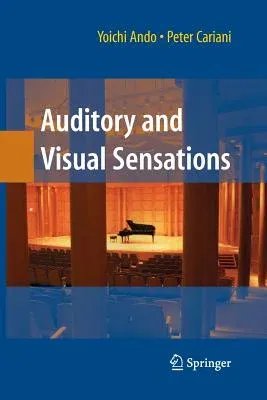This is an approach from the auditory and visual brain activities and
functioning to sensations. This book is concerned with physics,
psychology, brain physiology, blending science and art. Temporal
sensations such as pitch or missing fundamental, loudness, timbre, and
duration sensation, which is introduced here as the fourth, may be
described by the temporal factors extracted from the autocorrelation
function (ACF), which are associated with the left hemisphere. On the
other hand, spatial sensations such as localization in the horizontal
plane, apparent source width (ASW) and subjective diffuseness are
described by the spatial factors extracted from the inter aural cross
correlation function (IACF) are associated with the right hemisphere.
The "primary sensation" may be classified in two categories: temporal
sensations and spatial sensations. Therefore, any subjective responses
of the sound field may be described based on both the temporal and
spatial factors. The first part of book contributes to basic acoustics
researches related to brain including concert hall and opera house
acoustics, noise measurement and effects of noise on man, but also
psychological and physiological acoustics as well as speech and music
perception.
As described in the second part, there is a certain degree of similarity
in the processing of auditory- and visual -brain systems. An analogy of
this theory may be applied for the temporal sensations and the spatial
sensations of vision, as well as the subjective preference of the visual
environment. The typical temporal sensation of vision is "pitch" of a
flickering light, which includes the missing fundamental phenomenon.
Visual spatial sensations discussed here are contrast, regularity and
coarseness. But, no color effects on the sensations are treated in this
volume. As an application, a design theory incorporating temporal and
spatial factors may be generalized in architectural and environmental
design. Some examples of application will be offered.


